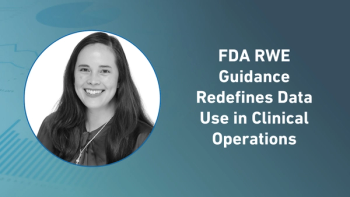
FDA Seeks More Effective Clinical Research Oversight
Investigators aim to increase the efficiency and consistency of FDA’s Bioresearch Monitoring program.
The formation of a cadre of investigators who are trained and dedicated to inspect clinical research sites aims to increase the efficiency and consistency of FDA’s Bioresearch Monitoring (BIMO) program, according to FDA compliance officials. They are making changes in BIMO inspections under FDA’s Program Alignment (PA) initiative to overhaul inspection operations for all regulated products. The aim is to reduce errors, ensure data integrity, and promote protection of research subjects under the initiative headed by Chrissy Cochran, director of the fairly new Office of Bioresearch Monitoring Operations (OBIMO) in the Office of Regulatory Affairs (ORA).
OBIMO now oversees all research-related site inspections in the U.S. and overseas, including clinical laboratories, animal testing facilities, institutional review boards (IRBs) and sites conducting bioequivalence studies. The main goal, Cochran explained at the recent Enforcement, Litigation and Compliance conference sponsored by the Food and Drug Law Institute (FDLI), is to ensure that research data can be relied on in weighing application approval decisions. This involves checking for fraud in recordkeeping operations, failure to follow investigational plans, and timely reporting of adverse events.
Cochran presented a fairly long list of documents that clinical sites should have ready for inspectors or available for scrutiny prior to a site visit. The list includes the study protocol, investigator’s brochure, IRB reports, informed consent documents, case report forms, and recruiting materials. BIMO staff will look for evidence that research subjects experience proper informed consent procedures and that investigators follow expected randomization schemes. Her office, she added, is examining the agency’s established BIMO policies to see where changes are needed to fit PA changes and new requirements of the 21st Century Cures Act and reauthorized user fee programs.
OBIMO relies largely on FDA Centers to select sites for inspection based on data submitted in applications. Such decisions usually consider a site’s prior inspection history, including complaints and previous enforcement reports, and whether it presents data outliers, such as higher dropout rates or overly fast or slow enrollment. Cochran explained that most BIMO inspections are pre-announced to permit site staff to assemble records and prepare for the visit, which usually involves one or two investigators scrutinizing operations and documents for a week. BIMO inspections cover a site’s facilities and equipment, including subject testing environment, communications practices and maintenance of data files. The investigators also examine how a site handles the test product-how and when it is received and its disposal.
The protocol is one of the first things that FDA inspectors check in launching an investigation of a research program, noted David Burrow, acting director of the Office of Scientific Investigations in the Office of Compliance at the Center for Drug Evaluation and Research (CDER). He emphasized at the FDLI conference that the protocol is the blueprint for building quality into clinical trials and that its language and provisions need to be clear. “Christmas tree protocols” that become loaded down with additional provisions, tests, forms, and reports are a main pitfall for sponsors and investigators in completing studies and producing clear and accurate data, Burrow said.
Sponsors can support quality research, he added, by ensuring that clinical sites are staffed by trained and well-supervised staff that understands their responsibilities, research objectives, applicable regulations, and have time to detect and correct any errors in real time. “Resilience” is vital in clinical research operations, he commented, so that when a crisis arises, investigators can respond effectively. “Errors happen all the time,” he observed, but investigators and sponsors can minimize the severity and probability of mistakes by “building quality into clinical trials.”
Newsletter
Stay current in clinical research with Applied Clinical Trials, providing expert insights, regulatory updates, and practical strategies for successful clinical trial design and execution.



